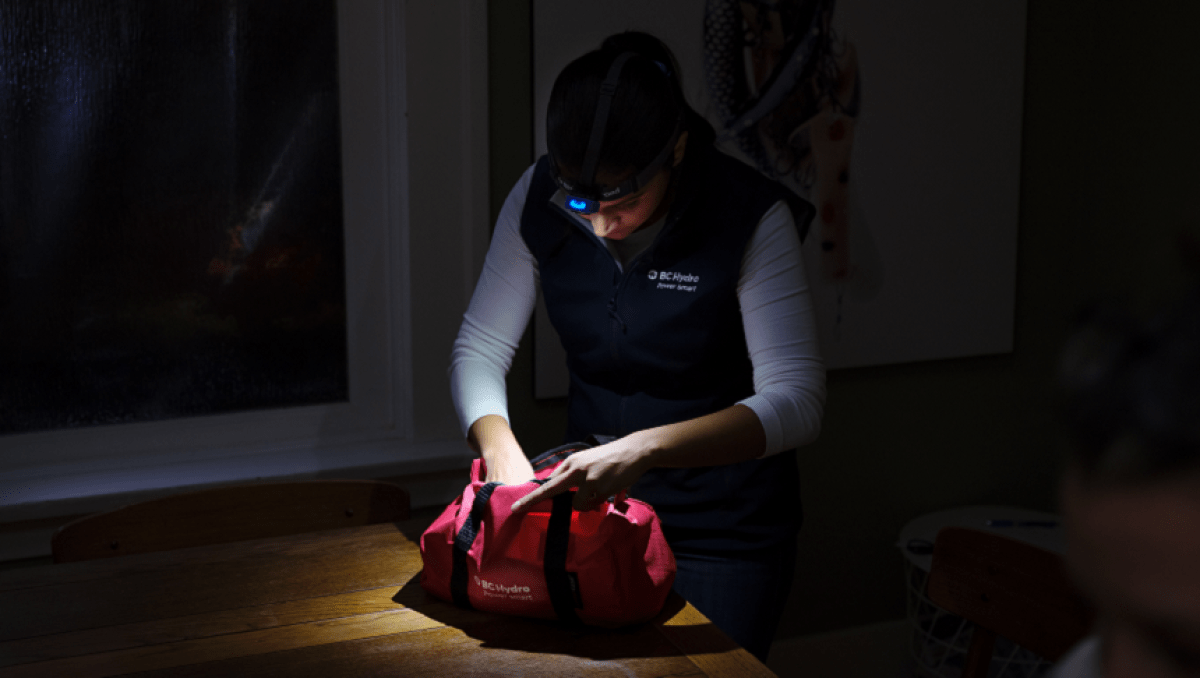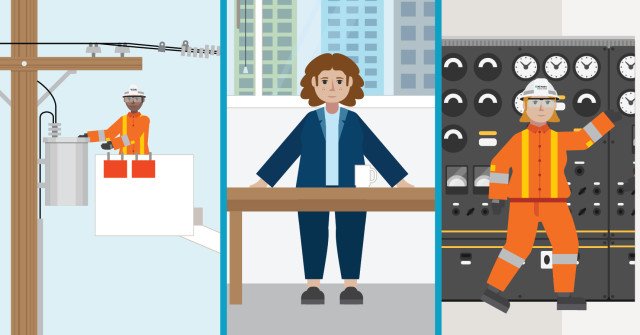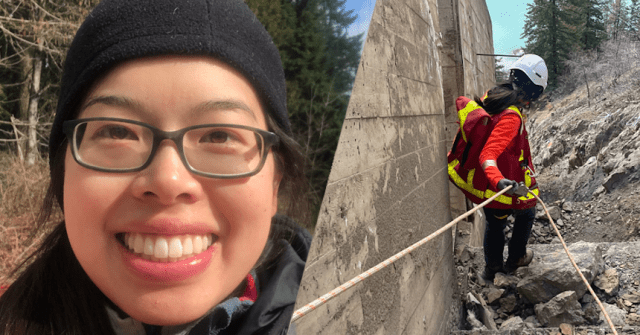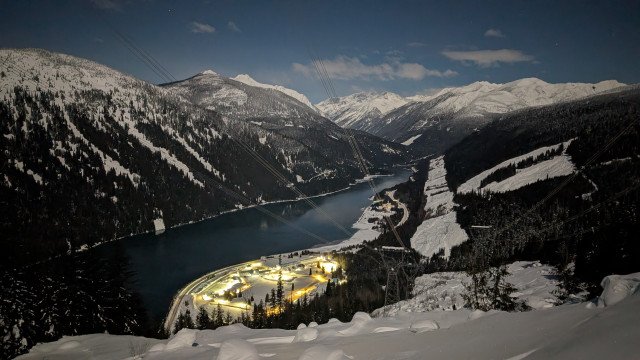A storm is raging, the windows shake and the lights go off in the classroom. It's a power outage. But how did it happen, and what is BC Hydro doing to get the power back on?
Today, we take a deep dive – and a careful shuffle – into power outages by serving up a few things you and your students might not know about power lines, power outages and extreme weather. And we provide some in-class activities to help students understand how to stay safe.
BC Hydro inspects trees each year to reduce the number of outages
On average, British Columbians experience fewer than two power outages per year in a province covered by trees. That's in large part because each year, BC Hydro vegetation management crews inspect an average of 5,000 hectares of trees and other tall vegetation growing under or adjacent to transmission and distribution power lines. And in 2022, they'll be busier than usual, inspecting about 6,900 hectares.
Expect 'atmospheric rivers' to become more intense
In November, we were all introduced to the term "atmospheric river", an extreme weather system that dumped record rain on southwest B.C., leading to flooding, bridge washouts, and deadly slides across highways. The term was first used by a pair of Massachusetts Institute of Technology researchers in 1998 to describe a narrow stream of water vapour travelling through the sky, and which can reach up to 1,600 kilometres in length.
While climate scientists say atmospheric rivers aren't a direct result of climate change, a warming planet is making them more intense, and according to a 2018 study, we can expect the ones reaching the B.C. coast to become up to 25% wider and longer, and up to 50% more intense than they've been in the past.
What a 60% chance of rain really means
A lot of us are mystified by weather predictions that might forecast a 60% chance of rain on a given day when, so often, no rain falls. What exactly does those percentages mean? The truth may surprise you.
"Let's say that in Vancouver, for example, there's a 40% chance of rain," says BC Hydro meteorologist Tim Ashman. "This just means that, for the predicted conditions, it will rain on that day four times out of 10."
He adds that the distribution of rain in a region can vary dramatically, from scattered or isolated showers to a more steady rain elsewhere. Unfortunately for B.C., there was a great deal of certainty around the extreme heat warning issued by meteorologists in late June in advance of the summer's devastating "heat dome". Few, if any, however, forecasted just how high the mercury would rise.
"We were predicting all-time temperature records to be broken, but to have the all-time Canadian record broken on three consecutive days and ultimately by a margin of nearly 5°C on the hottest day (49.6°C at Lytton) wasn't something that was probable," says Ashman.
It's not just trees and storms that cause outages
Yes, extreme weather and fallen trees are the leading causes of power outages in B.C. But in 2020 alone, outage causes included.... a balloon escaping from a granny's birthday party, a bear climbing a tree, squirrels gnawing on a power line, beavers building a dam, ospreys dropping sticks on a power line, wasps building a nest in BC Hydro equipment, and a thief stealing an electricity meter.
Why stay 10 metres from a power line? It's science
The rule is to stay 10 metres away from any downed or damaged power line, and it's not just because it's easy to remember that's about the length of a bus. Power lines create a voltage gradient on the ground, which means that voltage is very high at the cable, but fades away over a 10-metre distance away from it. If you're too close, don't walk away: know how to shuffle (which is covered next).
Hopping is old school. We now shuffle away from downed lines
Not so long ago, the advice from utilities was to hop away from a fallen power line, but that created the potential of stumbling and falling. To stay safe, shuffle straight ahead with your feet always touching one another. See Dave do it in this video, and keep in mind that danger occurs when electricity turns your body into a circuit: travelling from the ground up one leg, through your body, and down the other leg. Shuffling prevents electricity from starting that dangerous journey.
You're 10 metres away? Call 911
Once you're a bus-length away from all downed power lines, it's time to dial 911 to call for emergency help.
We don't know about downed trees and branches until you call us
Call BC Hydro directly – 1 888 POWERON on a corded landline, or *49376 on your mobile device – if you see trees or branches on a power line, or if you see a bright flash. Otherwise, we could be in the dark about the cause of an outage. And if lines are down, you still need to call 911.
When outages hit, BC Hydro thinks big first
It may not seem like crews are paying attention to an outage in your neighbourhood. But the first priority is to restore power to the greatest number of customers possible, and that often means concentrating on repairing high-voltage transmission lines and substations. Transmission lines, unlike the distribution lines in your neighbourhood or on your street, serve large numbers of customers. Damage to a transmission line or substation equipment can affect tens of thousands of people, instead of a few hundred.
Get a detailed explanation of how BC Hydro restores power, including a video in which BC Hydro's Dave talks to members of our restoration team about what we do to get the power back on.
For power outage updates, check our power outages map
You can check our outage map to see the latest status for your power outage. Search by your address to find it on the map or select the red dot closest to your home to see the outage area. We'll post estimated restoration times once crews have arrived and assessed the damage, and update the estimates as they work.
Educational resources for exploring power outages and safety
There's a variety of Power Smart for Schools activities to help students understand power outages and how to stay safe during storms and power outages.
Safe or unsafe? (K, Grade 1)
Games and discussions to learn to spot safe and unsafe situations around electricity and power lines. Activities include picture sorting, how to shuffle to safety, a video to show how to stay 10 metres from downed power lines, and our popular Safety Sing-along.
Search for Sparky (K to Grade 5)
A 30-minute activity using an interactive video that centres around a lost dog and how to find him while staying safe around electrical hazards.
Winter storm safety (K, Grade 1)
Utilizing a winter storm safety slideshow and game cards, and a take-home activity, students learn the differences between summer and winter weather and how to prepare for power outages and stay safe around downed power lines.
The path of electricity (Grade 7)
Worksheets and a path to electricity slideshow help students explore how the potential energy of water, held in large reservoirs, is transformed into electrical energy that can be used to charge our devices.
What should you do in a car accident involving power lines? (Grade 9)
Students create a flowchart and practice how to safely jump clear of a vehicle and shuffle to safety. Activities reinforce the rules for staying safe around fallen power lines.






